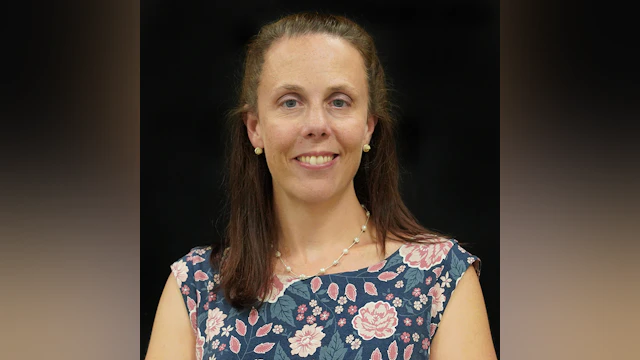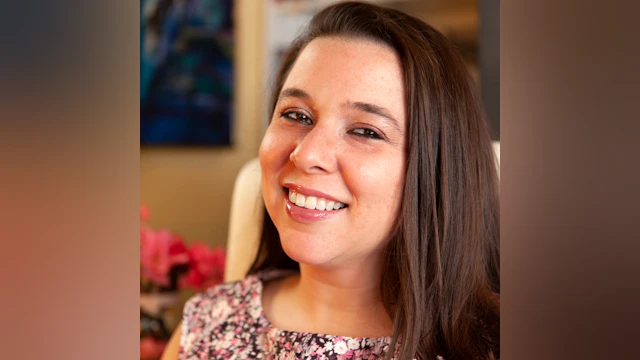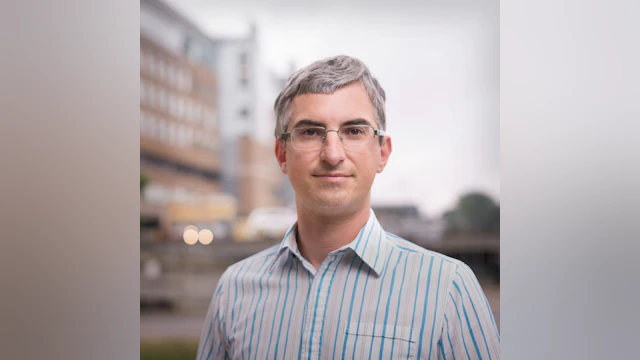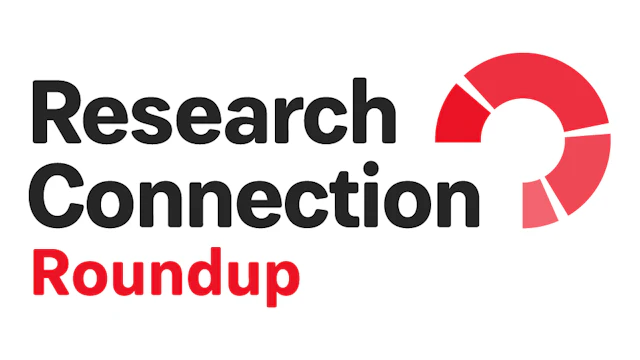The Research Roundup is a regular update of recently published findings in suicide prevention research. AFSP-funded studies included in this roundup examined how…
- Standard suicide risk assessments used in rural primary care settings are detecting risk
- Suicidal LGBTQ+ individuals described their experiences of online victimization
- Television news programs implemented ethical reporting guidelines, and
- We can learn more about the transition from non-suicidal self-harm to suicidal behavior

Researcher: Mary LeCloux, PhD
Institution: West Virginia University
Grant Type: 2019 Young Investigator Grant — $87,276
Grant Title: Evaluation of Suicide Risk, Opioid, and Pain Screening Protocols in West Virginia Primary Care
Rural communities in the U.S. face some of the highest suicide rates in the country, and the gap between rural and urban areas has only grown wider over the past two decades. Factors such as geographic isolation, limited access to behavioral health care, economic stress, and the widespread availability of firearms all contribute to this disparity. Cultural values around self-reliance and persistent stigma surrounding mental health create further barriers, leaving many rural residents without the support they need. For rural Americans, the local doctor’s office may be their only point of contact with the health system. That makes primary care clinics places for routine check-ups, and critical opportunities to identify suicide risk and connect people to care. The challenge is ensuring that providers in these settings have the right tools (i.e., ones that are brief, accurate, and practical) to recognize when someone may be at risk.
To address this, Dr. Mary LeCloux used her AFSP grant to evaluate how well two brief screening tools, the Ask Suicide-Screening Questions (ASQ) and Item 9 of the Patient Health Questionnaire (PHQ-9) that asks about self-harm, detected suicide risk among 214 adults attending rural primary care clinics in West Virginia. Participants completed surveys before their appointments, and about half took part in a one-month follow-up. Results showed that both the ASQ and PHQ Item 9 were effective assessments for risk for suicidal thoughts and behaviors to help primary care physicians engage with their patients about their risk. Screening for pain and opioid use did not meaningfully improve detection. Importantly, LGBTQ+ participants were more likely to report having suicidal thoughts and behaviors, highlighting a subgroup with especially high rates in rural settings. These findings provide preliminary evidence that both ASQ and PHQ Item 9 can serve as practical screening tools in rural primary care, while underscoring the need for larger studies and targeted strategies to support high-risk groups.
Citation: Christensen, M., Culp, S., Campo, J. V., Bridge, J. A., & Horowitz, L. (2025). Evaluation of the Ask Suicide-Screening Questions (ASQ) tool, Item 9 of the Patient Health Questionnaire (PHQ), pain, and opioid screening to detect suicide risk among rural adult primary care patients. The Journal of rural health : official journal of the American Rural Health Association and the National Rural Health Care Association, 41(3), e70064. https://doi.org/10.1111/jrh.70064

Researcher: Candice Biernesser, PhD
Institution: University of Pittsburgh
Grant Type: 2021 Young Investigator Grant — $79,821
Grant Title: Development and Feasibility Testing of a Suicide Prevention Intervention for Sexual and Gender Minority Youth
LGBTQ+ adolescents experience/report disproportionately high rates of depression, anxiety, and suicidal thoughts and attempts compared to their peers. Because social media is such a central part of life for many adolescents, negative online experiences can be harmful, especially for LGBTQ+ youth who may already encounter rejection or discrimination in schools, families, or communities. Hurtful comments, harassment, and threats online are not just fleeting words on a screen; they can intensify feelings of shame, isolation, and fear. Research suggests that, when compounded with other stressors, online victimization can heighten the risk of self-harm and suicidal thoughts. Listening directly to the voices of LGBTQ+ teens about these experiences is crucial to designing prevention strategies that meet their needs and protect their well-being.
With her AFSP-funded grant, Dr. Candace Biernesser explored the experiences of 20 LGBTQ+ adolescents, ages 13–18, all of whom had a history of suicidal thoughts or behaviors. Participants were recruited through social media ads and a mental health clinic in Pittsburgh. They answered surveys and provided in-depth interviews about their online lives. Every participant reported experiencing online victimization linked to their LGBTQ+ identity, ranging from verbal harassment and misgendering to sexual harassment and physical threats. 16 of the 20 adolescents described these experiences as worsening symptoms of depression and anxiety, contributing to self-harm or intensifying suicidal thoughts. The impacts were especially strong when harassment came from close peers or family members, and some youth noted that repeated or severe incidents left long-lasting wounds. Whether at school, within families, or through digital mental health programs tailored to their realities, these findings can be used to inform the development of interventions that both reduce online victimization and provide timely, affirming support for LGBTQ+ adolescents.
Citation: Biernesser, C., Win, E., Escobar-Viera, C., Rose, M., & Goldstein, T. (2025). Experiences of Online Victimization Among LGBTQ+ Adolescents and Perceived Impacts on Mental Health and Suicide Risk. Journal of Adolescent Research, 0(0). https://doi.org/10.1177/07435584251330809

Researcher: Mark Sinyor, MD, FRCPC
Institution: University of Toronto/Sunnybrook Research Institute (Canada)
Grant Type: 2020 Standard Research Grant — $99,993
Grant Title: Impact of a National Media Engagement Strategy in Canada on Suicide-related Media Reporting, Social Media Content and Suicide Rates
The way suicide is reported in the media matters, not just for public understanding, but for public health. Certain kinds of coverage can do harm: when news reports focus heavily on suicide deaths, describe methods in detail, or use stigmatizing language, they risk contributing to what’s known as the Werther effect, a rise in suicides following sensational or unsafe reporting. On the other hand, media can play a protective role: when stories highlight that suicidal crises can be survived, show that help is available, or provide resources like the 988 Suicide and Crisis Lifeline, they create what’s called the Papageno effect, giving viewers reasons for hope. Unlike newspapers, television coverage has been less closely studied. Examining how major U.S. cable networks cover suicide provides an important window into whether media practices are helping or harming, and whether responsible reporting guidelines are being followed.
To examine this important question, Dr. Mark Sinyor used his AFSP grant to analyze more than 600 suicide-related TV segments aired between 2012 and 2022 on CNN, Fox News, and MSNBC. Dr. Sinyor coded each segment for harmful elements (such as explicit descriptions of suicide methods or stigmatizing language) and protective elements (such as discussing warning signs, sharing crisis resources, or telling stories of survival). Across networks, most coverage centered on suicide deaths, often tied to specific individuals, while only 2% of stories highlighted survival. Harmful elements were frequent: nearly half of the segments mentioned suicide methods and more than 40% included stigmatizing language. Protective content was infrequent, with references to the national crisis lifeline or discussion of warning signs appearing in less than 25% of segments. While there were some differences across networks (e.g., for example, MSNBC more often included policy-focused reporting and Fox News more often tied suicide to COVID-19) the overall picture was one of an important opportunity to educate on safe reporting guidelines to continue guiding media to use the guidelines and make use of media’s potential protective capabilities.
Citation: Sinyor, M., Men, V. Y., Chan, P. P. M., Rain, S., Posel, A., Jayakumar, N., Mitchell, R. H. B., Schaffer, A., Steinberg, R., Pirkis, J., Heisel, M. J., Goldstein, B. I., Redelmeier, D. A., Stack, S., & Niederkrotenthaler, T. (2025). 'Fair and balanced?': quality of suicide-related reporting on major US cable news networks. The British journal of psychiatry : the journal of mental science, 1–8. Advance online publication. https://doi.org/10.1192/bjp.2025.10309

Researcher: Brian D’Onofrio, PhD
Institution: Indiana University
Grant Type: 2017 Standard Research Grant — $75,000
Grant Title: A Genetically Informed Study of Psychosocial Risk Factors for Suicide Attempt/Self-Harm
Suicide is the fourth leading cause of death worldwide among adolescents, and while many young people who engage in self-injury never attempt suicide, for others, it marks a crucial step on the path toward more suicidal behavior. Understanding what leads some young people to move from nonsuicidal self-injury (NSSI) to a suicide attempt (SA) is essential: this transition can mean the difference between behaviors that, while harmful, are not intended to be fatal, and those that can result in physical harm and even death. Because suicide risk emerges from a mix of inherited traits and life experiences, ranging from family history to trauma, and other stressors, one way researchers untangle this puzzle is through twin studies, which can separate the influence of genetics from other factors by comparing identical twins (who share nearly all their genes) to fraternal twins (who share about half). This approach doesn’t always identify specific genes, but it can reveal whether a behavior is partly inherited or mostly shaped by unique life experiences.
With his AFSP grant, Dr. Brian D’Onofrio and colleagues followed nearly 4,000 Swedish twins from age 18 to 24, focusing on those who reported NSSI at 18 and whether they went on to attempt suicide by 24. To assess the role of genetics, the team compared how often both members of identical twin pairs (who share nearly all of their DNA) showed the same patterns of NSSI and suicide attempts, versus fraternal twins (who share only half). If identical twins were more similar to each other than fraternal twins, it suggested a genetic influence. Dr. D’Onofrio found that teens who self-injured at 18 were about five times more likely to later attempt suicide. More than half of the risk for NSSI, and about a third of the risk for suicide attempts, could be traced to inherited factors, with much of the genetic risk for attempts overlapping with that for NSSI. At the same time, individual life experiences unique to each twin played a role in determining who engaged in NSSI in the first place. Together, the findings highlight the need to both monitor young people who self-injure and to address the environmental stressors that can push them toward greater danger.
Citation: Ohlis, A., Li, L., Kuja-Halkola, R., Lundström, S., D'Onofrio, B. M., Hellner, C., Lichtenstein, P., Cederlöf, M., Chang, Z., & Bjureberg, J. (2025). Genetic and environmental aetiologies of the transition from nonsuicidal self-injury to suicide attempt: a longitudinal twin study. Molecular psychiatry, 10.1038/s41380-025-03165-z. Advance online publication. https://doi.org/10.1038/s41380-025-03165-z
Learn more about the AFSP research grants featured in this monthly roundup, as well as others, here.
